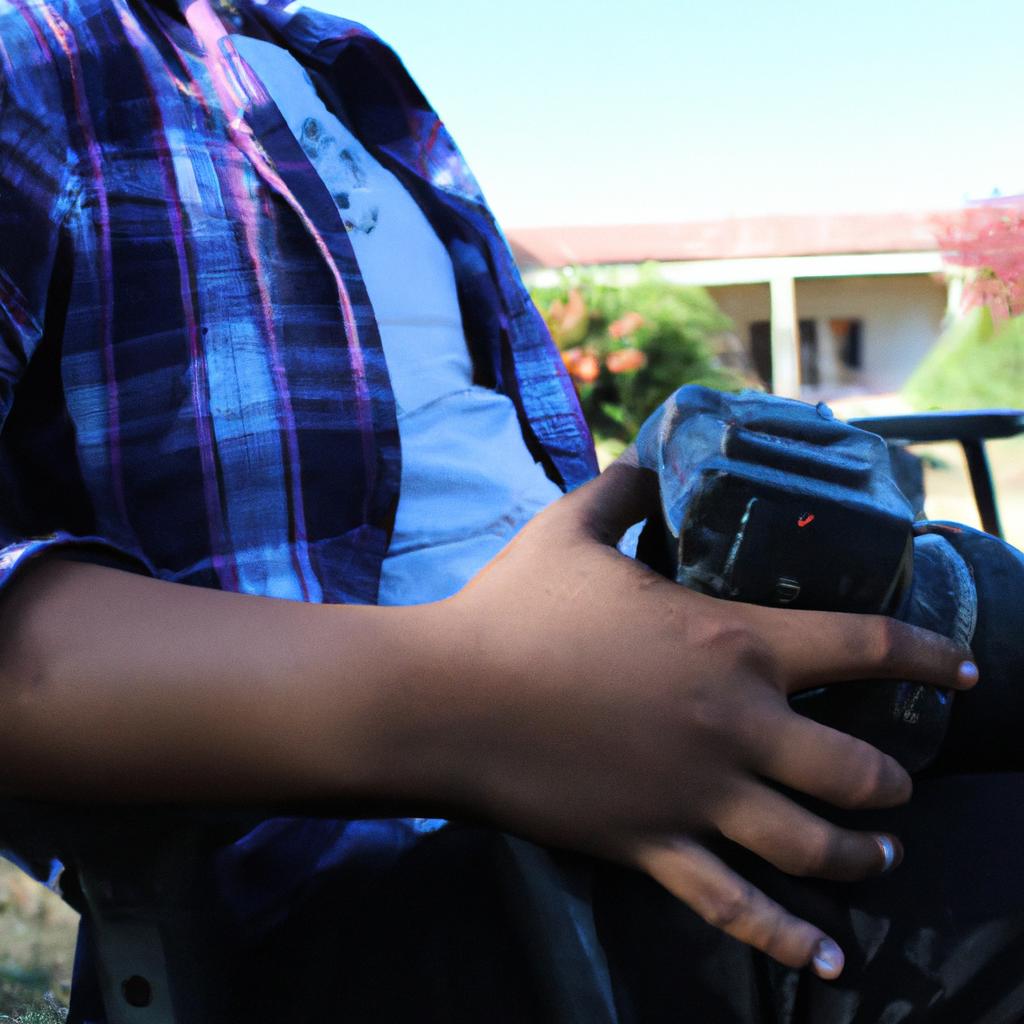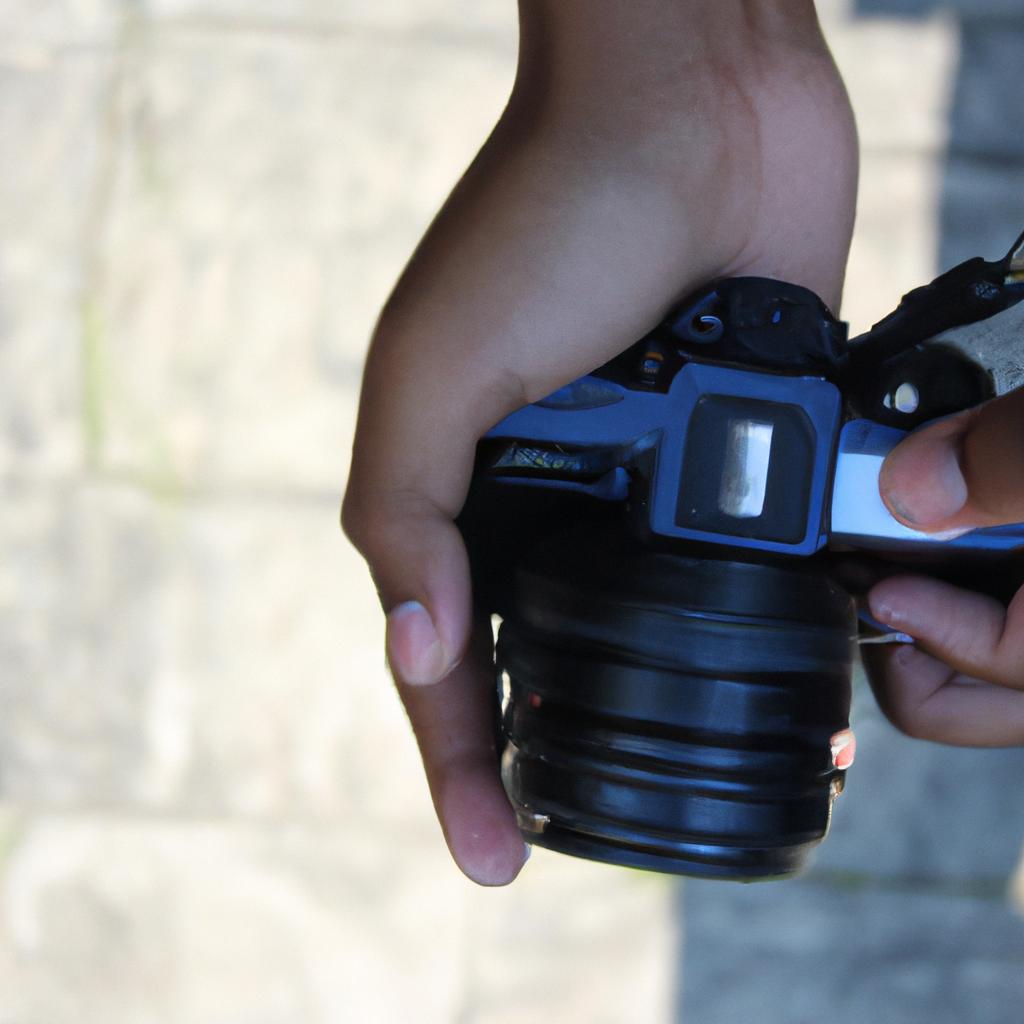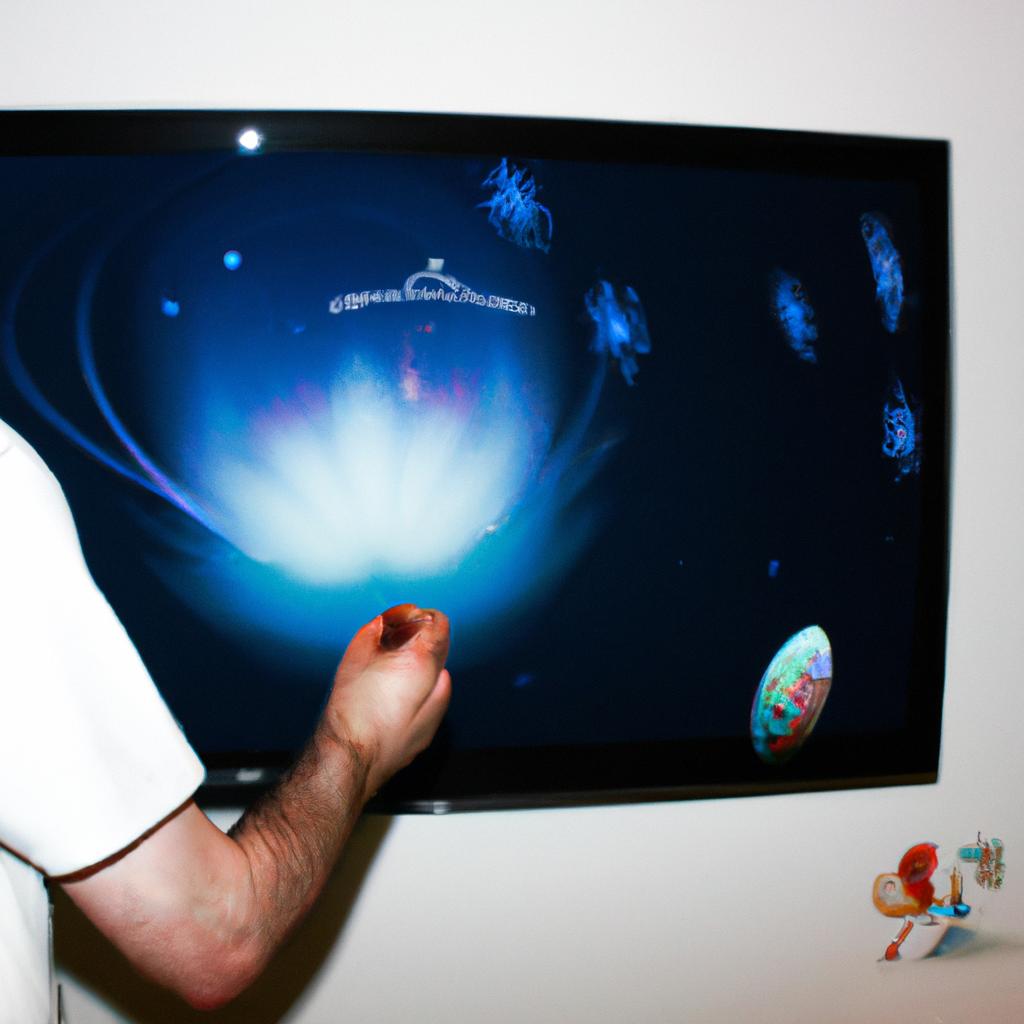The art of storytelling has always been a fundamental aspect of human communication, enabling individuals to convey ideas, emotions, and experiences. In the realm of arts and television, narrative structure plays a crucial role in shaping the viewer’s understanding and engagement with documentary storytelling. This article aims to explore the intricacies of narrative structure within documentaries by examining various techniques employed in this genre.
To illustrate the significance of narrative structure, consider the hypothetical case study of a documentary that chronicles the life of an aspiring musician from their humble beginnings to achieving international recognition. By carefully crafting the narrative arc, incorporating elements such as character development, conflict, resolution, and thematic coherence, filmmakers can effectively capture the audience’s attention while delivering a compelling story. The exploration of narrative structure in arts and television not only highlights its capacity to captivate audiences but also acknowledges its potential for conveying powerful messages and fostering empathy towards different perspectives.
Through an examination of key features like plot progression, pacing, use of interviews or voiceover narration, visual symbolism, and editing choices among others, this article seeks to shed light on how documentary storytellers employ these tools to shape narratives that resonate deeply with viewers. Furthermore, it will delve into how variations in narrative structures impact audience perception and emotional connection to real-life events and individuals portrayed in the documentary.
One common narrative structure employed in documentaries is the chronological approach, which presents events in a linear fashion, following a clear timeline. This structure allows viewers to understand the progression of the story and witness the transformation of characters over time. By presenting events in this order, filmmakers can build suspense, create anticipation, and keep audiences engaged throughout the documentary.
Another narrative technique often used is the non-linear or fragmented structure. This approach involves jumping back and forth between different time periods or perspectives, creating a sense of mystery and complexity. Filmmakers may use this technique to challenge traditional storytelling conventions, provoke thought, or highlight contrasting viewpoints on a particular subject.
The pacing of a documentary also plays a significant role in its narrative structure. The speed at which information is presented can impact how viewers perceive and interpret the story. Slow pacing may be used to evoke contemplation or emphasize emotional moments, while fast-paced editing can generate excitement or tension.
Interviews and voiceover narration are valuable tools for shaping narratives within documentaries. Through interviews with subjects involved in the story or experts in relevant fields, filmmakers can provide firsthand accounts, personal insights, and expert analysis that add depth to the narrative. Voiceover narration serves as a guiding force that provides context and connects various elements of the story.
Visual symbolism is another powerful element used to enhance narrative structure in documentaries. Filmmakers may employ symbolic imagery to convey themes or emotions subtly. Metaphors, visual motifs, and recurring symbols help establish connections between different parts of the story and engage viewers on an intellectual and emotional level.
Editing choices also play a crucial role in shaping documentary narratives. Selecting specific shots, arranging scenes in a particular sequence, incorporating music or sound effects—all contribute to crafting a cohesive story that elicits desired responses from viewers. Editing techniques such as parallel editing (showing multiple events happening simultaneously) or cross-cutting (alternating between two different actions or locations) can heighten tension and build suspense.
In conclusion, narrative structure within documentaries is a multifaceted concept that encompasses various techniques and elements. By understanding how filmmakers employ these tools—such as plot progression, pacing, interviews, visual symbolism, and editing choices—we can appreciate the artistry behind documentary storytelling. The careful construction of narratives not only captures the audience’s attention but also fosters empathy, encourages critical thinking, and leaves a lasting impact on viewers.
Defining Narrative Structure
Defining Narrative Structure
Narrative structure is a fundamental aspect of storytelling in various art forms, including television and documentary filmmaking. It encompasses the organization and arrangement of events, characters, and themes within a narrative to create a coherent and engaging story for the audience. By understanding narrative structure, filmmakers can effectively convey their intended messages and evoke emotional responses from viewers.
To illustrate this concept, let us consider a hypothetical case study: a documentary about climate change. The filmmaker aims to educate viewers about the consequences of global warming while inspiring them to take action. Through careful manipulation of narrative structure, the documentary unfolds in a way that captivates its audience.
One key element of narrative structure is the use of signposts or transitions that guide viewers through different stages of the story. These signposts serve as markers indicating shifts in time, location, perspective, or theme. For instance, they may include textual overlays on screen accompanied by voice-over narration or interviews with experts. These cues help maintain clarity and coherence throughout the documentary.
Furthermore, bullet point lists can be employed strategically within a documentary’s narrative structure to evoke an emotional response from the audience. Consider the following example:
- Rising sea levels threaten coastal communities.
- Extreme weather events intensify due to climate change.
- Endangered species face habitat loss and extinction.
- Human activities contribute significantly to greenhouse gas emissions.
This list succinctly highlights some of the alarming impacts of climate change, provoking concern and empathy among viewers.
In addition to bullet points, tables can also be utilized within a documentary’s narrative structure to enhance engagement with the subject matter. Here is an example table showcasing potential solutions to combat climate change:
| Solution | Description | Potential Impact |
|---|---|---|
| Renewable energy | Transitioning towards clean sources like solar power | Reduces reliance on fossil fuels |
| Sustainable living | Adopting eco-friendly practices in daily life | Minimizes carbon footprint |
| Environmental law | Implementing regulations to protect the environment | Holds polluters accountable |
| Conservation | Preserving natural resources and biodiversity | Maintains ecological balance |
This table not only presents information concisely but also offers viewers tangible options for addressing the issue, empowering them with a sense of agency.
By understanding how narrative structure influences audience perception and engagement, filmmakers can craft documentaries that effectively convey their intended messages. In the subsequent section, we will explore the elements of narrative structure in more detail, delving into techniques used by artists and television creators to construct compelling stories.
Transitioning from our exploration of defining narrative structure, let us now delve into the elements that constitute its foundation.
The Elements of Narrative Structure
Narrative Structure in Arts and Television: An Exploration of Documentary Storytelling
Defining Narrative Structure has provided us with a theoretical foundation for understanding the components that shape storytelling. Now, let’s delve into The Elements of Narrative Structure and explore how they come together to create compelling narratives in arts and television. To illustrate this, consider the acclaimed documentary “Blackfish,” which examines the captivity of killer whales at SeaWorld.
One crucial element of narrative structure is character development. In “Blackfish,” we witness the transformation of Tilikum, an orca held in captivity, from a seemingly gentle creature to one involved in tragic incidents. Through interviews with former trainers and experts, viewers are exposed to various perspectives on Tilikum’s journey, leading to a deeper understanding of his behavior. This exemplifies how character arcs can drive engagement by evoking empathy or sparking curiosity within audiences.
Another essential aspect of narrative structure is conflict. In “Blackfish,” conflicts arise between animal rights activists seeking justice for captive killer whales and SeaWorld’s corporate interests defending their practices. These conflicting forces generate tension throughout the film, captivating viewers as they anticipate resolution or change. Conflict serves not only to sustain interest but also prompts reflection on ethical considerations surrounding animals’ treatment in entertainment industries.
Additionally, pacing plays a significant role in shaping documentaries’ narrative structure. By strategically arranging scenes and events, filmmakers control the rhythm at which information unfolds before audiences’ eyes. For instance, intense sequences depicting dangerous encounters between trainers and orcas may be juxtaposed with quieter moments that offer insight into marine biology research or personal anecdotes from former employees. Such deliberate variations in pace maintain audience engagement by providing emotional respite while building anticipation for what lies ahead.
To evoke an emotional response from viewers:
- Highlighting the bond between Tilikum and his trainers
- Portraying instances where he displays both aggression and affection
- Exploring the psychological impact of captivity on the orca
- Documenting efforts to improve animal welfare in marine parks
Table: Emotional Impact of Narrative Elements in “Blackfish”
| Narrative Element | Emotional Impact |
|---|---|
| Character Development | Empathy, Curiosity |
| Conflict | Tension, Reflection |
| Pacing | Anticipation, Emotional Respite |
The Elements of Narrative Structure intertwine seamlessly in documentaries like “Blackfish,” captivating viewers and fostering a deeper understanding of complex issues. In the subsequent section about The Three-Act Structure, we will explore how this traditional storytelling framework is adapted for documentary filmmaking, further enhancing the impact of narratives that challenge our perceptions and inspire change.
The Three-Act Structure
Building upon our understanding of the elements that contribute to narrative structure, we now delve into an examination of the widely utilized three-act structure in documentary storytelling.
To better comprehend how narrative unfolds within documentaries, it is essential to explore the concept of the three-act structure. This framework divides a story into distinct sections, each serving a specific purpose in advancing the plot and engaging the audience. For instance, let’s consider a hypothetical documentary about climate change activism.
-
Act One: Establishing Context
In this initial act, the filmmaker sets the stage by introducing key characters and themes while establishing the context for their journey towards environmental action. The audience gains insight into the protagonist’s motivation and begins forming emotional connections with them.- Introduce main character(s), such as a passionate young activist or an influential scientist.
- Present compelling statistics and evidence showcasing the severity of climate change.
- Highlight personal experiences or anecdotes related to environmental impacts.
- Evoke empathy through visual imagery depicting natural beauty at risk.
-
Act Two: Rising Tensions
As the story progresses, act two brings forth escalating conflicts and challenges faced by individuals striving for change. These hurdles create tension and propel viewers further into emotional engagement with the subject matter.Challenges Faced by Activists Opposition from politicians Resistance from corporations Personal sacrifices required Media backlash -
Act Three: Resolution and Impact
The final act offers closure by presenting resolutions or consequences resulting from efforts made throughout the film. It highlights achievements, setbacks, and potential solutions that inspire audiences to reflect on their own roles in addressing pressing issues like climate change.- Showcase successful initiatives taken by activists leading to positive outcomes.
- Address any unresolved conflicts or lingering obstacles requiring continued action.
- Encourage viewers to take personal responsibility and join the cause.
As we can see, the three-act structure provides a roadmap for documentary filmmakers to create compelling narratives that captivate audiences. By carefully structuring their storytelling approach, they can effectively communicate important social or environmental messages while fostering an emotional connection with viewers. In the subsequent section, we will delve into another crucial aspect of narrative construction in documentaries: the importance of conflict.
The Importance of Conflict
Transitioning from the previous discussion on the three-act structure, we now turn our attention to another crucial element in narrative storytelling – conflict. Conflict serves as a driving force within any story, providing tension, development, and resolution. By examining its role in documentary filmmaking, we can better understand how conflict enhances the overall impact of narratives.
To illustrate the significance of conflict in documentaries, let us consider an example. In the critically acclaimed documentary “Blackfish,” directed by Gabriela Cowperthwaite, conflict arises between SeaWorld trainers and captive killer whales. This clash forms the central narrative arc that propels the film forward. Through interviews with former trainers and footage showcasing dangerous encounters between humans and orcas, “Blackfish” presents a compelling story that captivates viewers while shedding light on ethical concerns surrounding marine theme parks.
The importance of conflict in crafting engaging narratives cannot be overstated. Here are a few key reasons why it plays such a pivotal role:
- Emotional engagement: Conflict evokes strong emotional responses from audiences, drawing them into the story and encouraging empathy for characters involved.
- Narrative tension: Conflict introduces suspense and uncertainty into the storyline, keeping viewers invested as they anticipate resolution.
- Character development: Conflicts provide opportunities for character growth and transformation throughout the narrative journey.
- Theme exploration: Conflict allows filmmakers to explore larger societal issues or thematic concepts within their documentaries effectively.
As seen above, incorporating conflict not only adds depth to documentary storytelling but also helps create impactful experiences for viewers. To further analyze this aspect’s significance across different narratives, we present a table highlighting notable examples where conflicts have shaped renowned documentaries:
| Documentary | Conflict | Impact |
|---|---|---|
| “An Inconvenient Truth” | Climate change vs. climate skeptics | Raised awareness about environmental issues |
| “The Act of Killing” | Perpetrators’ guilt vs. justice | Explored the aftermath of Indonesian genocide |
| “Bowling for Columbine” | Gun control debate vs. school shootings | Examined America’s gun culture and its consequences |
| “Citizenfour” | Privacy rights vs. government surveillance | Unveiled Edward Snowden’s revelations about mass surveillance |
In conclusion, conflict serves as a vital ingredient in documentary storytelling, driving narratives forward while engaging audiences on an emotional level. By incorporating conflict effectively, filmmakers can create compelling stories that explore meaningful themes and prompt viewers to contemplate larger societal issues. Next, we will delve into another essential aspect of narrative construction – character development.
Transitioning seamlessly now to the subsequent section on Character Development in Storytelling, we explore how well-crafted characters enhance the impact and resonance of narratives without merely following prescribed steps or formulae.
Character Development in Storytelling
Building upon the significance of conflict in narrative storytelling, character development plays a crucial role in engaging audiences. By crafting multi-dimensional characters, storytellers can evoke emotional responses and deepen the viewers’ connection to the narrative. This section will examine the techniques employed to develop compelling characters within documentary storytelling.
Paragraph 1:
To illustrate the impact of character development on audience engagement, let us consider an example from the documentary “The Thin Blue Line” by Errol Morris. In this film, Morris intricately develops the character of Randall Dale Adams, a man wrongly convicted for murder. Through interviews with Adams and other individuals involved in his case, Morris showcases Adams’ humanity and innocence while exposing flaws within the justice system. By humanizing Adams and presenting him as a relatable figure worthy of empathy, Morris captivates viewers who become emotionally invested in his quest for justice.
- Characters that undergo transformation or growth throughout the narrative are more likely to resonate deeply with audiences.
- Authenticity is key when portraying real-life characters; their struggles and vulnerabilities should be portrayed realistically.
- Exploring complex inner conflicts within characters allows viewers to connect on a deeper level.
- Balancing strengths and weaknesses within characters contributes to their believability and relatability.
Paragraph 2:
Character development can be achieved through various techniques such as effective use of dialogue, visual cues, and narration. Documentaries often rely on interviews with subjects to provide insights into their lives, motivations, and experiences. Additionally, observational footage capturing genuine interactions between characters offers glimpses into their personalities beyond what they explicitly express. These elements facilitate an emotional response by allowing viewers to witness raw emotions firsthand.
| Techniques | Examples |
|---|---|
| Dialogue | “Searching for Sugar Man” |
| Visual Cues | “Man on Wire” |
| Narration | “Grizzly Man” |
Paragraph 3:
By skillfully developing characters, documentary storytellers can captivate audiences and elicit empathy. The connection formed between viewers and the individuals portrayed enhances the impact of the narrative’s message. In this way, character development serves as a vital component in documentary storytelling, enabling filmmakers to convey real-life stories with depth and authenticity.
As we delve deeper into the exploration of documentary storytelling, it is essential to examine the role that visuals and sound play in enhancing narratives and captivating audiences.
The Role of Visuals and Sound
In the realm of documentary storytelling, visuals and sound play a pivotal role in engaging audiences and conveying narratives effectively. By utilizing various cinematic techniques and audio elements, filmmakers are able to enhance the emotional impact of their stories. To illustrate this point, let us consider an example: imagine a documentary about environmental conservation efforts in the Amazon rainforest. Through visually stunning aerial shots capturing the vastness of the forest, combined with immersive sound design featuring ambient sounds such as chirping birds or rustling leaves, viewers can be transported into the heart of this crucial endeavor.
Visuals and sound serve as powerful tools for evoking emotions and immersing audiences within the narrative world of a documentary. Here are some ways in which these elements contribute to the overall storytelling experience:
-
Creating Atmosphere: The use of visuals such as lighting, color grading, and composition helps set the tone and atmosphere of a scene. Similarly, carefully selected background music or natural sounds can heighten tension, evoke nostalgia, or inspire awe.
-
Conveying Information: Visual cues like infographics or archival footage aid in presenting facts, statistics, or historical context. Simultaneously, voiceovers or interviews complemented by appropriate sound effects provide additional layers of information that enrich audience understanding.
-
Establishing Emotional Connection: Well-crafted visuals combined with empathetic sound design have the potential to foster emotional connections between viewers and subjects on screen. For instance, close-up shots highlighting facial expressions coupled with intimate dialogues create empathy towards individuals facing adversity.
To further illustrate how visuals and sound work together harmoniously in documentary filmmaking, we present a table showcasing different techniques commonly employed:
| Technique | Purpose | Example |
|---|---|---|
| Slow motion | Emphasize details | A droplet falling from a leaf in extreme slow motion |
| Montage | Convey passage of time | Rapid succession of images showing a city’s transformation over years |
| Natural soundscapes | Establish authenticity | The chirping of birds in the early morning rainforest |
| Cinematic lighting | Create mood and atmosphere | Dramatic low-key lighting to evoke suspense |
In conclusion, visuals and sound are integral components of documentary storytelling. These elements have the power to captivate audiences, convey information effectively, establish emotional connections, and shape the overall narrative experience. By utilizing various techniques, filmmakers can engage viewers on multiple levels, immersing them within the story being told. Ultimately, it is through these carefully crafted audiovisual elements that documentaries become immersive journeys into captivating narratives.












